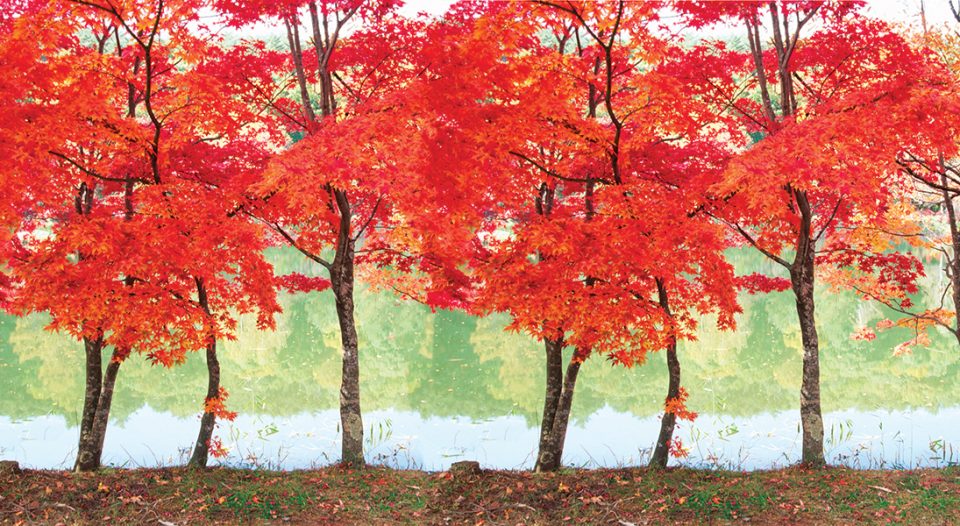A few years ago, during a tour of the Portland (Ore.) Japanese Garden, our guide stopped in front of an elegant Japanese maple tree, its delicate leaves fanning out in a canopy of sunlit lace over the mossy ground. She pointed out the airy openness of the maple, explaining that a technique called “open-center pruning” encouraged this tree and others in the garden to flourish. No longer obscured by a tangle of extraneous branches and leaves, the uniquely beautiful essence of each tree was revealed.
Back home from my trip, I was inspired to try my hand at “pruning open” the trees in my yard. Garden shears in hand, I tackled the brambly shrubs that lined my picket fence. Two hours later, piles of shorn greenery lay at my feet. The spirea was indeed pruned but, sadly, it bore no resemblance to the elegant, sculpted trees and shrubs I’d seen in the Portland garden.
Turns out, I’d neglected a critical but often overlooked part of the pruning process.
First, take time to observe and reflect
Deep transformation, both in the garden and in ourselves, requires observation, reflection, stillness and patience. Before a gardener even picks up the pruning shears, the first job is always to get to know the tree, becoming familiar with how it looks from all angles, how it behaves in each season, its strengths and weaknesses, the circumstances of its planting and the elements that have affected its growth over time.
January presents an ideal opportunity to turn inward, to quiet ourselves and to listen.
This is precisely where I erred in my backyard pruning efforts. Rather than taking the time to note how the spirea was growing, where it was thriving and what, exactly, needed to be cut, I dove straight into pruning, eager to see the results.
The new year signifies a new beginning, a time of transition and change as we look with expectant hope toward the future. Some of us make a resolution (or, if you’re like me, five or six) or choose a word or verse that will serve as a guidepost in the weeks and months to come. We are eager to put an action plan in place and get to work—anxious to prune away what’s not producing good fruit in our lives and focus on nurturing the tender shoots of promising new growth.
Too often, though, in our haste to leap headlong into the visible, active parts of the work of transformation, we neglect the most important part of the process: the stillness, silence and space necessary to reflect on and recognize where and what we need to prune back in order to flourish into our truest, best selves.
Listen to your soul
For many of us, pausing for quiet reflection and self-observation doesn’t come easily. We fill our days to the brim with busyness, checking items off our to-do lists, running endless errands, cramming our calendars with social events. Our lives are full of self-induced noise because the hard truth is that we don’t necessarily want to hear or know what lies beneath the surface. We’re afraid of what we’ll find beneath all our hustle and striving. We are leery of what our own souls will tell us about ourselves. Thus, we avoid the silence, stillness and solitude necessary for self-reflection, careening into what’s next without first considering where we’ve been.
As the extra demands and busyness of the holiday season recede, January presents an ideal opportunity to turn inward, to quiet ourselves and to listen. If you’re not accustomed to spending regular periods in stillness and silence, start small. Try sitting for five minutes each day this month in a quiet, comfortable place, away from the distractions of your phone, your to-do list and your loved ones.
Be gentle with yourself when your mind inevitably begins to race. The day’s frustrations, disappointments and expectations will likely crowd your thoughts as you sit in silence. Simply bring your attention back to the present moment by noticing the sights, scents and sounds in your immediate environment.
Your soul will reveal your true self, created by God, made in the image of God, beloved by God.
Over time, with patience and practice, you will begin to sense the stirring of your soul. As you listen in stillness and silence, your soul will reveal the wounded parts of you that need healing and restoration. Your soul will reveal the false selves you’ve crafted and hidden behind—the parts of yourself that might need to be pruned away. Your soul will reveal your true self, created by God, made in the image of God, beloved by God.
The Japanese gardening technique of pruning open is a beautiful metaphor—one we can look to for guidance in our lives and along our own spiritual journeys. In cutting back in order to open up, we can uncover who we are at the very center of our God-created selves. But first, we must do as the gardener does. We must get to know the tree.




